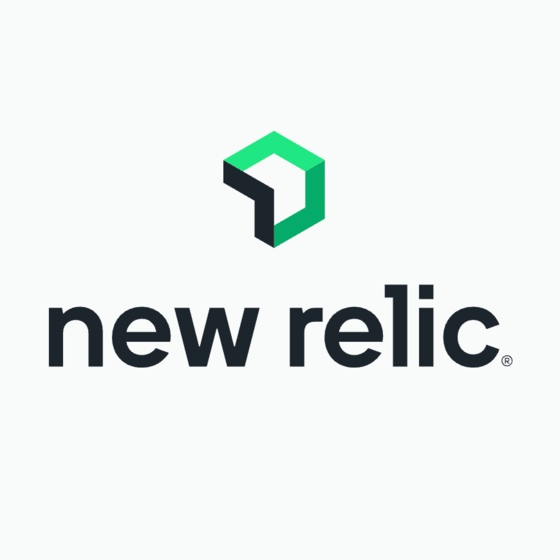DevOps brings together two important groups: those who create software (developers) and those who keep computer systems running smoothly (operations teams). The goal of DevOps is to make these two teams work together more effectively to make and update software faster and more reliably.
The DevOps market is projected to have a CAGR of 24.7% (that's a lot of CAGR!) between 2023 and 2030. DevOps practices are already commonplace in many organizations, and adoption is constantly growing.
DevOps implementation bridges the gap between developers and end-users, expediting the development cycle and elevating the caliber of final products.
If your SaaS organization hasn’t yet embraced the DevOps culture, this guide will help you implement DevOps tools and principles successfully. Let's get legendary!

What Is DevOps?
DevOps is a set of practices and cultural philosophies that combine software development (Dev) and IT operations (Ops). Its primary goal is to shorten the software development life cycle and provide continuous delivery with high software quality.
DevOps achieves this by promoting better collaboration and communication between development and operations teams and automating the process of software integration, testing, deployment, and infrastructure changes.
This approach especially benefits DevOps startups aiming to produce stable, reliable, high-quality products with enhanced speed and efficiency.
-

New Relic
Visit WebsiteThis is an aggregated rating for this tool including ratings from Crozdesk users and ratings from other sites.4.3 -

QA Wolf
Visit WebsiteThis is an aggregated rating for this tool including ratings from Crozdesk users and ratings from other sites.4.8 -

ManageEngine Applications Manager
Visit WebsiteThis is an aggregated rating for this tool including ratings from Crozdesk users and ratings from other sites.4.3
Planning A Successful DevOps Implementation
Changing your development workflows can create significant upheaval. Proper planning prevents piss poor performance ... right? In this case, it's vital to achieving a smooth transition.
Assessing Your Current Infrastructure
Before you change your existing development practices, you must understand your current procedures and infrastructure.
Choosing the Right Tools and Technologies
A robust toolchain is vital to DevOps implementation. What are some of the best DevOps tools and software to consider?
| DevOps Tool Type | DevOps Tool Options |
| Versioning/collaboration | Source code management tools and platforms like GitHub/Gitlab, Subversion, Mercurial, etc. |
| Containers and container orchestration | Docker, Kubernetes, etc. |
| Testing | Katalon, Selenium, etc |
| Monitoring | Tools for monitoring the performance of your applications and web services, ideally with logging and alerting features |
Whether you use in-house scripts or third-party tools to automate deployment depends on the platforms you're deploying to. For example, Amazon offers AWS CodePipeline for easy cloud deployment.
When choosing your tools, consider what you’re already using for software development and what your developers are already familiar with. Avoid unnecessary code-switching or developing in-house workarounds to get tools to communicate with each other if there’s already an API available.
If you’re a smaller organization, you may think building by hand or monitoring your endpoints with occasional pings will get the job done. However, this manual approach won’t scale. Start testing your automation today so that you have robust systems in place as your operations grow.
DevOps Implementation Roadmap
Introducing effective DevOps implementation into your organization can't be done overnight. Planning, training, and testing are necessary to help your team understand and apply DevOps best practices.
The following roadmap may help you introduce DevOps concepts in your workplace.

Overcoming Common Challenges In DevOps Adoption
Change doesn't always come easily. Consider the following when introducing your team to DevOps practices.
Managing Change and Resistance
It’s normal for developers and managers to be nervous about more frequent deployments and faster delivery.

To highlight the benefits, focus on measurable DevOps metrics and emphasize how continuous testing can reduce the impact of human errors while helping your organization achieve its common goal of producing a quality software product.
A well-implemented DevOps program can help you produce a high-quality product with a shorter time-to-market, increasing customer satisfaction and reducing your development costs.
Ensuring Consistent Quality and Performance
Shorter development times and more frequent deployments don’t have to cause more bugs. Continuous integration tools and automated testing tools allow developers to receive near real-time feedback on the quality of their code.
Builds can be deployed to testing and then rolled out to a production environment once they’re proven to be stable. Because each build is smaller and version control systems are in place, it’s easy to roll back builds when an issue is found. In addition, tracing the root causes of any bugs is a more straightforward process because fewer things change in each build.
Integrating DevOps with Existing Processes
Transitioning to DevOps should be treated like migrating to the cloud. Start by containerizing and testing your applications in a staging area before implementing infrastructure automation tools such as Ansible or Kubernetes.
Containerizing applications makes them easy to deploy. However, making larger changes to your infrastructure may be risky if you have complex legacy systems.
As the success stories of companies such as Ticketmaster and Capital One show, gradually breaking off core pieces of functionality into isolated microservices makes the transition to a DevOps methodology relatively low risk.
Katie sanders, The CTO Club
Measuring The Success Of Your DevOps Implementation
Once your DevOps processes are in place, review their performance regularly and update them in response to critical metrics.
Key Metrics and Performance Indicators
Numbers don't lie. Here are some key metrics to keep an eye on:
- Change rates: How often are you pushing out those sweet, sweet updates? Think of it like a high score – the more frequent and smooth your deployments, the better!
- Failure rates: A few bumps in the road are inevitable—it's how quickly you fix them that counts!
- Successful deployments: Celebrate your victories! Track the number of successful deployments to see your team's hard work pay off.
- Time to recover from failures: Speed is key when resolving issues. Track your recovery time so you can brag about how quickly you get things back on track.
- Application performance: Numbers are great, but happy users are the ultimate reward! Consider user satisfaction as a key metric. Regularly releasing stable updates with features they crave is a surefire way to keep the applause rolling in.
Wanna dial up the fun-gineering!? (hehe) Subjective measures like end-user satisfaction should be considered. If you deliver stable new releases with often-requested functionality, your users will be happier, and your DevOps strategy will achieve your operational goals.

Continuous Improvement and Feedback Loops
DevOps isn't a one-and-done deal. It aims to support iteration and continuous improvement, and your DevOps implementation strategy should be based on the same idea. As you interpret data on your development lifecycle, seek feedback from key stakeholders and solicit advice from senior DevOps engineers.
Here's how to keep your DevOps strategy in the fast lane:
- Data Drives Decisions: Analyze your development lifecycle data. This intel will help you identify bottlenecks and areas for optimization.
- Get everyone involved: Seek feedback from key players (stakeholders, senior engineers) to gain valuable insights.
- Stranglehold on Bottlenecks: Did you find a roadblock? Don't just accept it! Tweak your processes or fine-tune your automation tools to smash those bottlenecks and keep your workflow flowing smoothly.
Each time you identify bottlenecks or issues, alter your processes or fine-tune your automation tools to optimize your workflow. Remember, continuous improvement is the name of the game. By incorporating feedback and constantly optimizing, you'll ensure your DevOps strategy is a winner!
Is Your Development Stuck In Slow-Mo?
Tired of watching your projects crawl like a dial-up connection? DevOps is here to supercharge your workflow! It's the secret weapon of Agile software development methodology.
The toolchain is not the only thing that makes the DevOps approach work so well; it also changes how people think and collaborate. Creating a culture of continuous development, where people aren’t afraid to deploy often and risk small failures, is also crucial.
Final takeaways:
- Blast Off with Faster Development: Ditch the snail pace and launch applications at lightning speed. DevOps streamlines the process, getting features to your users in record time.
- Downtime? Never Heard of Her: Say goodbye to frustrating outages. DevOps keeps your systems humming smoothly, minimizing downtime and maximizing productivity.
- Happy Users, Happy Life: Imagine the joy of delivering a stellar product your users adore. DevOps helps you build better software faster!
So, ditch the slow lane and let DevOps take you to the development fast track! Because in the cutthroat world of software development, 60% of the time, it works every time.

Subscribe to The CTO Club's Newsletter for the latest technical developments in DevOps.










